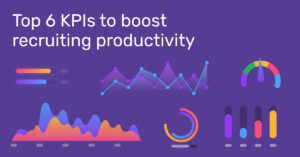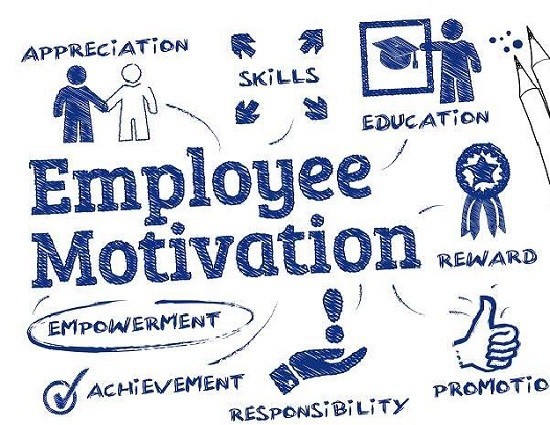
How to Increase Recruiter Productivity and Motivation: Top 6 KPI’s
January 22, 2024 SourceCandidates.com
In the dynamic landscape of human resources, considering how to increase recruiter productivity is pivotal in shaping the success of an organization. To stay competitive and attract top talent, companies are adopting innovative HR practices to enhance recruiter productivity and motivation. The resume sourcing team at SourceCandidates has explored the latest trends and strategies that HR professionals are implementing to create a more efficient and motivated recruiting team.
- Technology Integration:
One of the key drivers of how to increase recruiter productivity is the integration of advanced technologies. Applicant Tracking Systems (ATS), AI-driven sourcing tools, and video interviewing platforms are revolutionizing the way recruiters operate. Automation of repetitive tasks allows recruiters to focus on high-value activities, such as building relationships and assessing candidate fit.
- Data-Driven Decision Making:
HR analytics is becoming increasingly important in optimizing recruitment processes. By leveraging data, recruiters can identify trends, measure the effectiveness of sourcing channels, and make informed decisions. Predictive analytics helps in forecasting hiring needs, enabling proactive talent acquisition strategies.
- Personalized Training and Development:
Investing in the continuous learning and development of recruiters is crucial for how to increase recruiter productivity. Personalized training programs tailored to the specific needs of recruiters can enhance their skills and keep them abreast of the latest industry trends. This not only improves their performance but also contributes to a sense of professional growth and job satisfaction.
- Flexible Work Arrangements:
Flexibility in work arrangements has become a key driver of employee satisfaction. Offering recruiters the option to work remotely or adopt flexible schedules can contribute to better work-life balance, reducing burnout and increasing overall motivation. This practice has become especially relevant in the post-pandemic era, with remote work gaining widespread acceptance.
- Recognition and Rewards:
Acknowledging the efforts and achievements of recruiters is essential for maintaining high motivation levels. Recognition programs, whether in the form of regular praise, awards, or incentives, contribute to a positive work environment. Recognizing and rewarding recruiters for their hard work fosters a culture of appreciation and boosts morale.
- Wellness Initiatives:
Employee well-being is now a central focus in HR practices. Implementing wellness initiatives, such as mental health programs, stress management workshops, and fitness challenges, can significantly impact the overall motivation and productivity of recruiters. A healthy and engaged workforce is more likely to deliver optimal results.
- Collaborative Recruitment Teams:
Encouraging collaboration among recruiters and creating a team-oriented culture is essential for success. Regular team meetings, brainstorming sessions, and shared goals foster a sense of belonging and purpose. Collaboration also allows recruiters to learn from each other, share best practices on how to increase recruiter productivity, and collectively overcome challenges.
How to increase recruiter productivity lessons learned
In the fast-paced world of talent acquisition, staying ahead requires HR professionals to embrace the latest practices that enhance recruiter productivity and motivation. By leveraging technology, data analytics, personalized development, flexible work arrangements, recognition programs, wellness initiatives, and a collaborative culture, organizations can create a dynamic and motivated recruiting team. As the HR landscape continues to evolve, staying attuned to these trends will be crucial for attracting top talent and driving organizational success.

How to increase recruiter productivity with the Top 6 KPI’s
- Time-to-Fill (TTF):
- Definition: The average number of days it takes to fill a job opening from the initial posting to the candidate’s acceptance.
- Importance: TTF is a critical KPI that directly impacts overall recruitment efficiency. A shorter time-to-fill indicates a streamlined and efficient hiring process, reducing the risk of losing top talent to competitors.
- Quality of Hire (QoH):
- Definition: A metric that assesses the performance and long-term success of hires, often measured by factors such as job performance, retention, and impact on organizational goals.
- Importance: While speed is crucial, the quality of hires is equally vital. QoH ensures that recruiters focus not only on filling positions quickly but also on selecting candidates who contribute positively to the organization over the long term.
- Source of Hire:
- Definition: A breakdown of where successful hires originated, whether through job boards, social media, employee referrals, or other channels like Monster, Indeed, and LinkedIn
- Importance: Understanding the most effective sources of hire helps recruiters allocate resources strategically with how to increase recruiter productivity. By optimizing efforts in high-performing channels, recruiters can improve productivity and reduce costs associated with less effective sources.
- Candidate Satisfaction:
- Definition: Feedback gathered from candidates regarding their experience with the recruitment process.
- Importance: Positive candidate experiences contribute to a strong employer brand and can result in better-quality applicants. Monitoring candidate satisfaction provides insights into areas for improvement, ensuring a positive recruitment experience that aligns with the organization’s values.
- Offer Acceptance Rate:
- Definition: The percentage of job offers extended that are accepted by candidates.
- Importance: A high offer acceptance rate indicates that the organization is making appealing offers to candidates. Monitoring this KPI helps recruiters refine their approach, ensuring that offers are competitive and attractive to the desired talent.
- Cost Per Hire (CPH):
- Definition: The total cost incurred to fill a position, including recruitment advertising, agency fees, technology costs, and other related expenses.
- Importance: Cost per hire is a key metric for assessing the efficiency of the recruitment process. By optimizing the cost per hire, organizations can ensure that recruiting efforts are both productive and cost-effective.
These KPIs on how to increase recruiter productivity, when tracked and analyzed consistently, provide valuable insights into the effectiveness of the recruitment process and help recruiters make data-driven decisions to boost overall productivity.
Learn more about how to increase recruiter productivity – Contact SourceCandidates today!





